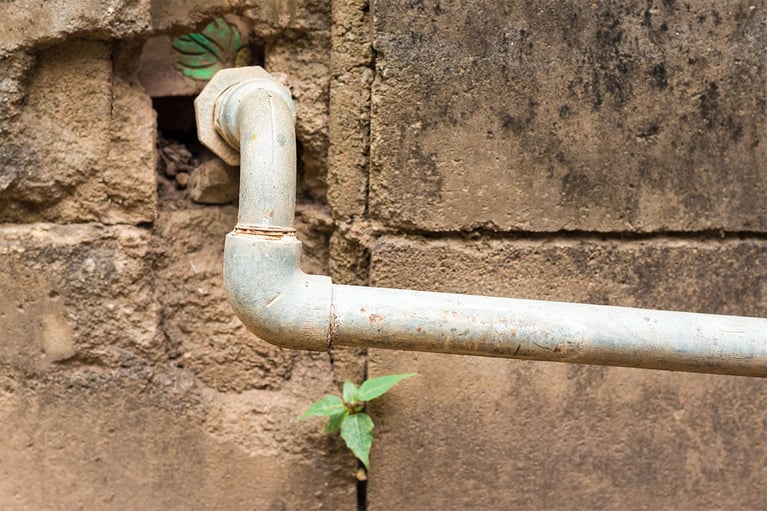Getting the Lead Out of Drinking Water - Federal Regulations and How NCT Can Help
Lead in drinking water is a serious public health issue that’s been in the news in the United States over the last couple decades. Probably the best-known example of lead-contaminated water’s ill effects is the water crisis in Flint, Michigan.
When the city of Flint changed their water supply from the Lake Huron supply to the local Flint River, a chain reaction of events occurred that led to toxic lead leaching into the city’s water supply and causing a public health crisis. Even though the city has now fully replaced all of its old lead service lines, as of 2019, the public’s goodwill and trust are still shaken.
Flint isn’t the only city in the United States that has faced, or will face, the important and daunting task of replacing lead service lines. Estimates indicate that every state in the USA has lead service lines within its borders.
Legislation at state and federal levels impacts the pace at which lead service lines are replaced, with recent federal changes highlighting the importance of “getting the lead out” of our country’s water supply.
New Concept Tools has developed the Service Line Puller Kit as one tool in waterworks utilities’ arsenal, to help maximize impact and minimize disruption when it’s time to install new service lines. The easier the process, the more cities across the USA will be able to replace their lead service lines in a timely manner - especially with federal deadlines looming.
Lead Service Lines Remain A Widespread Issue
While few examples are as well known or extreme as the water crisis in Flint, MI - which echoes in public concern to this day, even after the city has completely replaced all lead service lines - lead in the water supply is an ongoing threat to American communities.
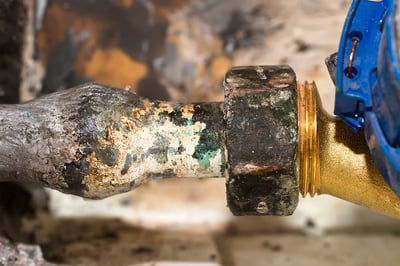
Despite federal regulation aimed at limiting lead exposure, and replacing lead service lines, many states don’t even have a reliable estimate, let alone an accurate count, of how many lead service fittings or pipes are still in place within their water distribution networks. This information gap makes it difficult to accurately plan for service line replacement to reduce the potential impact of lead getting into the water supply.
But lead service line replacement is crucial for public health. Lead is a neurotoxin, which means it can cause harm to the brain and nervous system - especially in children. Adults can suffer heart and kidney disease after exposure, too.
The best outcome for the American public is for all lead service lines to be identified and replaced with new lines that won’t leach toxic substances into the water supply. That’s why the federal government has established guidelines related to lead in water, overseen by the EPA.
The Lead and Copper Rule
The 1991 Lead and Copper Rule was established to minimize lead (Pb) and copper (Cu) levels in drinking water. It established an action level of 0.015 mg/L for lead and 1.3 mg/L for copper. Exceeding action levels could trigger remediation actions like water monitoring and treatment, lead service line replacement, and public education. The rule remained largely unchanged for many years.
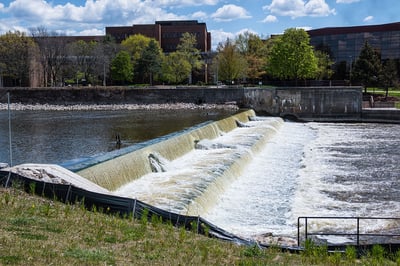 The administration of the rule falls to local municipalities, and some waterworks utilities have been more successful than others.
The administration of the rule falls to local municipalities, and some waterworks utilities have been more successful than others.
In August 2022, the EPA released updated guidance to help updated water systems develop and maintain a service line inventory. Revisions to the Lead and Copper Rule require this be completed by October 16, 2024. Knowing where lead pipes exist is the first step in replacing them, and the EPA has created free resources for municipalities to support this effort.
This deadline is part of an ongoing push at the federal level to update service lines and eradicate lead pipes across the USA.
Federal Initiatives to Get the Lead Out
In December 2021, the White House announced its Lead Pipe and Paint Action Plan, aimed at eradicating lead service lines across the United States within the next decade.
A combination of federal guidelines, agencies like the EPA and CDC, as well as state and local laws and initiatives, will all be needed to accomplish this massive goal. With federal funding and initiatives to aid in states’ efforts, states can access targeted assistance to replace lead service lines for places where children spend significant time - like preschools and daycare centers.
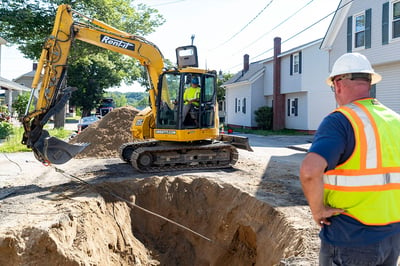
The EPA introduced a Lead Service Line Replacement Accelerators initiative in January 2023, providing targeted assistance to underserved communities in Connecticut, Pennsylvania, New Jersey, and Wisconsin. In March 2023, the EPA and HHS encouraged local, state and federal governments to use all available tools, like federal funding through the infrastructure law, to tackle lead service line replacement.
The recent infrastructure law has dedicated $15 billion towards the removal of lead exposure from drinking water. One way municipalities can maximize the funding they access through programs like the American Rescue Plan is by spending smarter - for example, using a trenchless service line replacement solution like the NCT service line puller kit. Water systems shouldn’t leak money when it comes to something as important as lead pipe replacement.
With federal guidance in place, states and municipalities still have time to get ahead of the October 2024 deadline and start replacing service lines with less hassle and lower cost. Many states and cities are already working on doing just that.
What States are Doing About Lead in Water
A growing number of states are establishing lead service line replacement programs. More than half of the states in the USA have begun initiatives to remove lead supply lines, and many municipalities have established local programs.
 While federal regulations will eventually require all suspected or confirmed lead supply lines to be replaced, the process can be complicated.
While federal regulations will eventually require all suspected or confirmed lead supply lines to be replaced, the process can be complicated.
Ownership of supply lines varies from city to city, state to state. The time, property disruption, and labor involved in digging up supply lines can be prohibitive in itself.
Cities that choose modern options, like in-place service line pulling, can make faster progress on their lead pipe eradication efforts.
Springfield, MA was years ahead of many other cities, starting its proactive lead service line replacement in 1992 and completing the project by November, 2005. Other communities, like Buffalo, New York, are currently tackling a proactive replacement program despite no known issues in their water supply. With the help of state funding, the city is replacing 200 lead supply lines each year and hasn’t had issues with lead levels in its water supply. Meanwhile, Washington, D.C. has city- and customer-led programs to replace lead service lines, with funding to offset costs to residents with lead supply on private property.
In Milwaukee, WI, a city initiative is tackling a huge backlog of up to 75,000 lead supply lines and replacing up to 1,000 lines each year - starting with childcare and daycare centers, protecting vulnerable populations. In Oconomowoc, $3,000 grants help homeowners replace lead supply lines on private property.
Denver, CO, has up to 80,000 properties affected by lead service lines - so the city is tackling up to 5,000 lines per year. The efforts are estimated to take 15 years.
Other states, like Rhode Island, are starting to focus on the issue of lead service lines. In January 2023, RI Senate President Dominick Ruggerio introduced a bill aimed at eradicating the approximately 35,000 lead water pipes in the state at no cost to homeowners within ten years.
The push to remove lead service lines and reduce the risk of lead pipes or fittings causing a public health crisis is spreading - and your city could be next!
Lead Service Line Free Cities
Some communities can already declare themselves free of lead service lines. As of October, 2020, the following municipalities had completed lead service line replacement:
- Framingham, MA - April, 2016
- Green Bay, WI - October, 2020
- Lansing, MI - December, 2016
- Madison, WI - 2011
- Medford, OR - January, 2017
- Parchment, Michigan - April, 2020
- Sioux Falls, SD - August, 2017
- Springfield, MA - November, 2005
- Spokane, WA - July, 2018
How New Concept Tools Can Help
If your waterworks utility is on a mission to join the growing list of communities that’s made lead service lines a problem of the past, New Concept Tools can help.
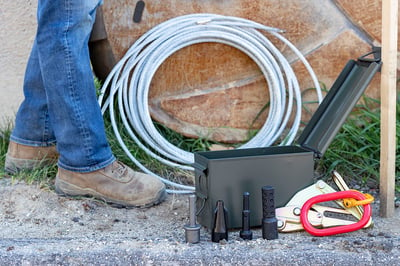
Our Service Line Puller Kit was designed to make trenchless service line replacement a reality for waterworks utilities nationwide. Replacing dangerous lead pipes with modern supply lines is an ideal reason to choose trenchless service line replacement.
Not only is the kit affordable, it saves your waterworks utility time and money from the first use. With minimal excavation and no trenches to dig, service line replacement is not only faster and easier, it doesn’t disrupt public roads or cause traffic problems for the surrounding community.
With a simplified process, you can get more service lines replaced, achieving the goal of getting the lead out sooner than ever. What could be better for your waterworks utility and your community? Trust New Concept Tools to help you achieve this important part of keeping the water supply flowing safely.

